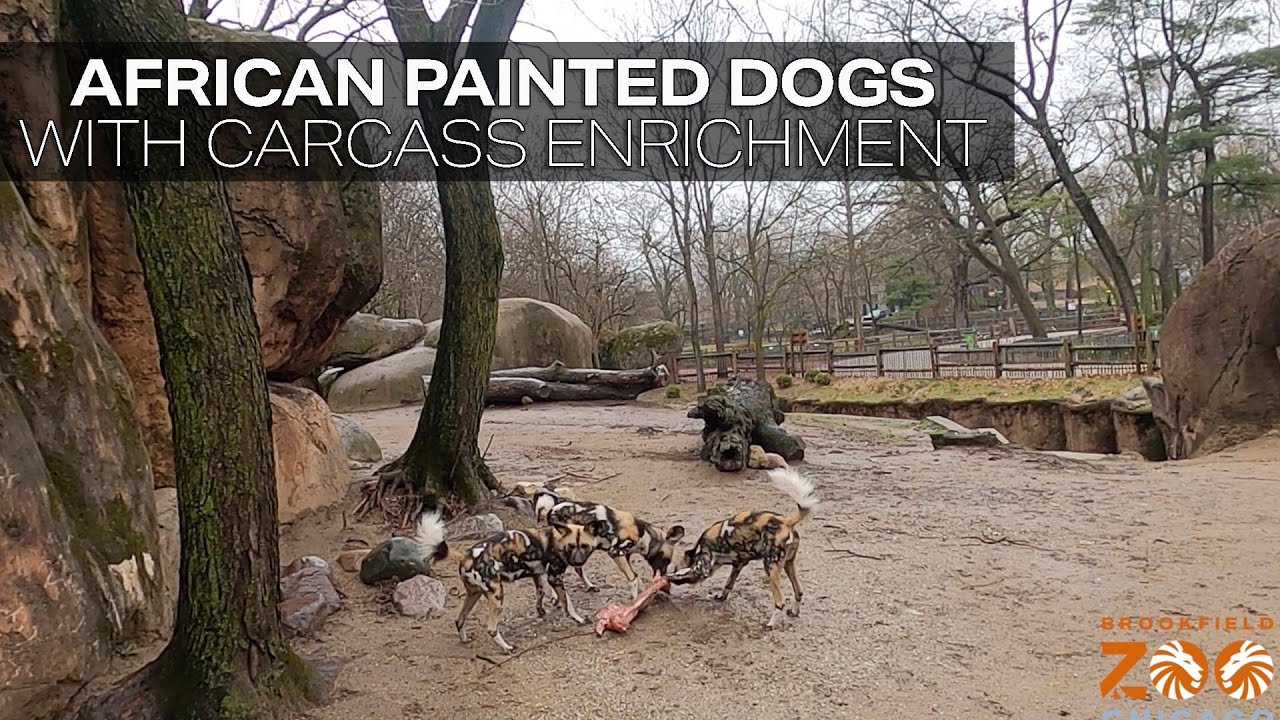– Understanding African Painted Dogs: Biology and Behavior
– The Importance of Carcass Enrichment in Zoo Environments
– African Painted Dogs in Wildlife Conservation Efforts
– Benefits of Enrichment Programs on Animal Welfare
– The Role of Zoos in Promoting African Painted Dog Conservation
African Painted Dogs, also known as Lycaon pictus, are a distinctive carnivore species in Africa owing to their striking coat patterns, complex social structures, and unique hunting techniques. These endangered canids are remarkable both in their ecological role as predators and in their specific challenges in the wild and captivity. Ensuring their well-being requires a deep understanding of their biology and behavior, a crucial element in zoo management and wildlife conservation.
Within the confines of zoos, African Painted Dogs thrive on environmental enrichment, which is critical to replicate the mental and physical stimuli these animals would encounter in the wild. Carcass enrichment is a method zoos use to engage the dogs’ natural behaviors and instincts. It involves presenting whole prey items or substantial portions, enabling the dogs to demonstrate cooperative hunting and feeding tactics reminiscent of their wild counterparts.
Carcass enrichment serves several purposes. Primarily, it allows the African Painted Dogs to engage in species-specific behaviors, improving their overall physical health, mental stimulation, and quality of life. The shredding and tearing of a carcass mirror the natural actions taken after a successful hunt, providing a food source, a means for physical exercise, and a way to hone their innate skills.
Engaging in carcass enrichment also strengthens the social bonds among pack members, central to the painted dog’s life. These dogs are known for their complex social hierarchies and cooperative nature, with packs often led by an alpha pair. Through carcass enrichment, members of the pack coordinate and communicate during the ‘hunt’ and share the spoils, affirming their connections and reinforcing the pack’s unity.
In addition to promoting natural behaviors and social health, carcass enrichment is employed to prevent the development of stereotypic behaviors often associated with captivity, such as pacing or excessive grooming. By providing an activity that consumes considerable time and attention, zoos can add variety to the daily lives of these intelligent animals, keeping their environment dynamic and engaging.
When addressing wildlife conservation efforts, it’s imperative to recognize the stark contrast between the African Painted Dog’s dire situation in the wild and the controlled safety of a zoo. Human encroachment, habitat destruction, and diseases such as canine distemper and rabies, often spread through domestic dogs, have led to declining populations in their native habitats. Conservation efforts are multifaceted, including habitat protection, community education, and breeding programs, aiming to protect and increase their numbers.
The role of zoos in these conservation efforts is multifaceted. By conducting and supporting scientific research, zoos contribute to a deeper understanding of the species, informing on-the-ground conservation actions. Educational programs for zoo visitors shed light on the painted dog’s plight, hopefully inspiring interest and support for their conservation. Moreover, participation in captive breeding programs helps sustain the species’ genetic diversity, offering a potential safety net for wild populations.
Carcass enrichment benefits the animals and plays a key part in conservation messaging by providing a tangible, educational display for zoo visitors. When patrons observe the African Painted Dogs engaging with carcass enrichment, they gain a visceral appreciation for the animals’ behaviors, social dynamics, and needs, which can inspire a greater commitment to conservation efforts. Additionally, by showcasing wholesome, naturalistic feeding options, zoos demonstrate their commitment to replicating the most authentic experience possible for the animals and the visitors.
Despite its advantages, carcass enrichment must be managed with expertise. Being sensitive to each pack’s needs is critical, as feeding dynamics vary significantly. Ethological studies guide zoo staff in optimizing these programs to fit the specific characteristics of their painted dog groups. Moreover, any enrichment program, carcass-based or otherwise, should be dynamic, avoiding predictability to maintain its effectiveness.
Summarily, the African Painted Dogs with carcass enrichment reflects a fine balance of skillful zoo management, keen consideration for animal welfare, and a strong synergy with broader wildlife conservation measures. As zoos continue to refine and apply these enrichment strategies, the benefits to African Painted Dogs in human care become increasingly evident. Understanding and replicating the natural behaviors and needs of these canids enhances their well-being in captivity and serves as compelling evidence of their unique adaptations and social structures. Providing for their complex needs is a testament to the commitment to both their welfare and the future of their kind on a global scale. Through educational outreach and a focus on wildlife conservation, zoos can help cement the African Painted Dog’s place in the world, ensuring their survival and enriching human understanding and appreciation of this remarkable species.
*****
Source Description
Content Warning: This video contains images of animals eating a goat carcass. Watch to learn more about why carcasses are part of their diet.
For more information, please visit www.brookfieldzoo.org

